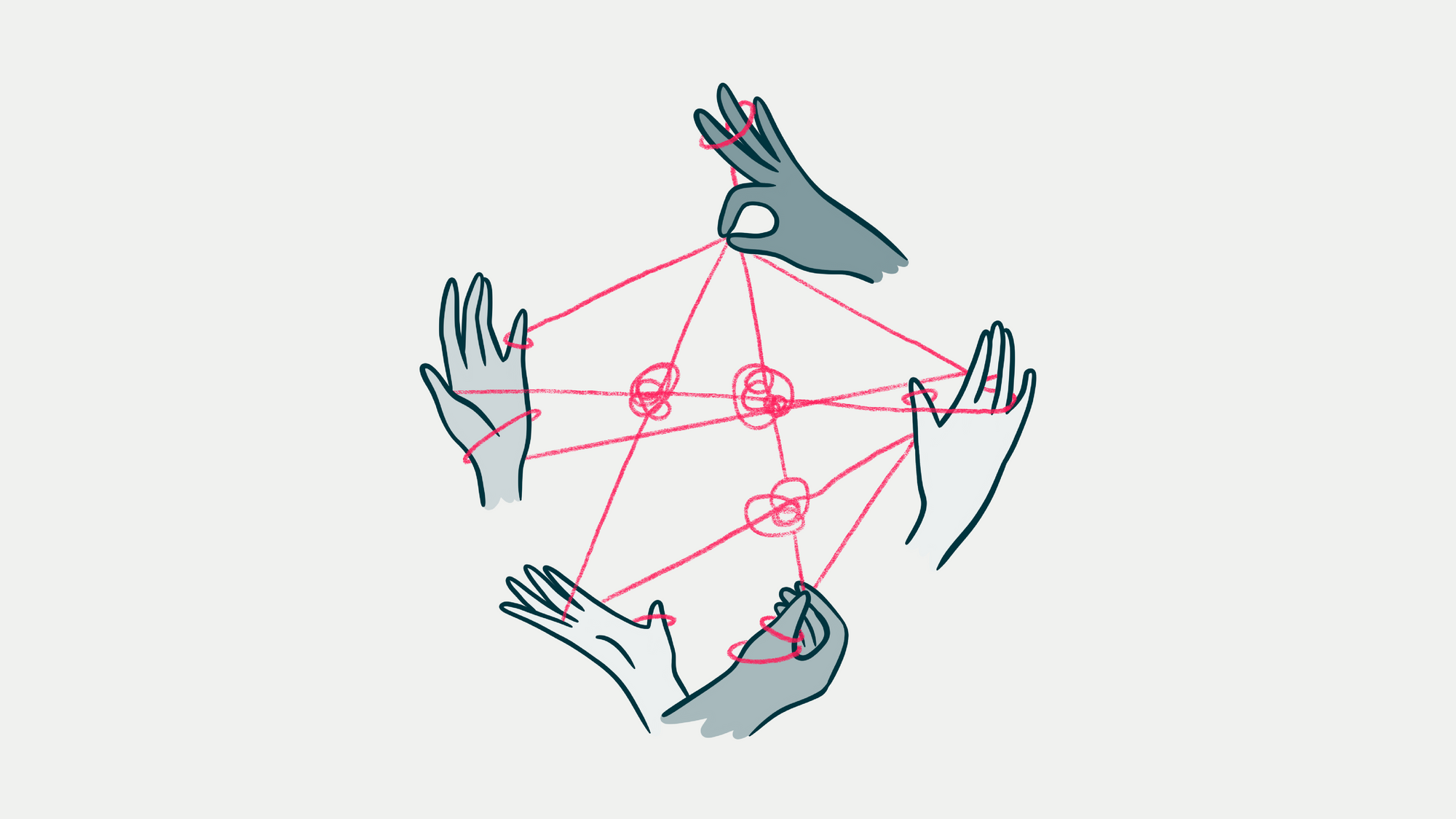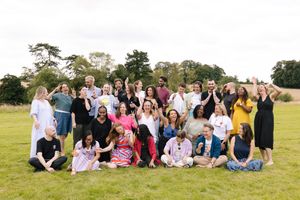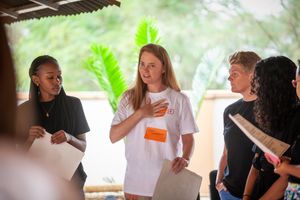
Last year, Brink celebrated turning 5. In the year that we launched a Foundation, wrapped up projects, started new ones, and had a ton of new Brinksters join us, we also redefined our business strategy and explored where we want to take Brink in the next 5 years. As we develop and expand, we’ve recognised we need to evolve the structures we rely on to communicate with each other - keeping us, us.
This is the first part in a series of blogs about our internal communications journey. In this blog, we’ll share our thinking behind the project we set ourselves, what we did to get started, and touch on some of the key findings we discovered. You can read part two here.
Brink was founded by Abi and Lea, who are both trained psychologists and coaches, and have always been passionate about building a small but mighty team capable of making significant dents on the world. Over the last 2 years, that small but mighty team has grown to be not-so-small and even-more-mighty, almost doubling the amount of Brinksters on board.
As a remote-first organisation with a model for global business, we’ve done a lot of work to make Brink a place where people can do their best, and feel healthy and well. This includes making a Mental Health at Work commitment and regularly exploring how we can look after Brinksters’ wellbeing while navigating an ever-changing world of challenges and opportunities.
Part of this work meant changing how my role as Brink’s Communications Manager looked. In July 2023, I’d spotted some areas across the business that I felt needed attention in a way that my role at the time didn’t properly allow for. We were missing a resource that was dedicated to making sure how we spoke and interacted internally, matched what we said and did externally.
With this in mind, I proposed a role change that allowed for continued work on our brand communications, but also a new area of focus on building out our internal communications world: keeping Brink looking and sounding sharp on the outside, and ensuring information flows smoothly on the inside, creating a joyful and authentic experience for Brinskters. Over the next few months, Lea and I worked closely together to lay the foundations for this work, observing challenges and opportunities we could tackle and setting our goals.
🌱 The challenges in a growing organisation
We’ve always strived to have clarity, honesty and a human-centred approach in how we communicate, from how we use Slack and the way our internal Notion pages work, to our tone of voice in the likes of our hiring rallies. We’re proud to be a B Corp, and one of Escape The City’s top 100 places to escape to, so it’s important to us that we prioritise the kinds of things that foster a culture that works for, and supports everyone.
Brinksters come from 13 nationalities and live in 7 countries. With that comes many differences in personal cultures, experiences and ways of communicating. We want to create an environment where each and every person feels heard, supported: where they have the psychological safety to be their authentic selves.
🤔 Working out what we wanted to accomplish
First, we took the time to explore what we felt was working well, and what needed some improvement. Having an open-feedback culture at Brink meant that we had already heard from Brinksters on some things, but we knew that other areas needed some more focus or exploration. With growth comes change, so we wanted to create a solid core that the team knows they can rely on, come what may.
We set ourselves a core goal: Ensure Brinksters feel connected to each other and our work.
This was then broken down into six smaller goals that would help us to get there:
- Authenticity across our communications. How we present externally when hiring Brinksters feels authentic and like a lived reality internally i.e. we don’t pay lip service to things and not follow through in reality.
- Stability through change. Brink is changing, the team is growing and we have new work and projects. Even though this is positive, all change is handled sensitively and communicated clearly. People have a sense of (and believe in) the stable foundations that underpin everything we do.
- An efficient and effective information flow. People have the right information in order to do their jobs well and feel they get important news or updates at the appropriate time. They can make decisions based on dependable information.
- Tangible, positive experiences between Brink and Brinksters. We ‘keep the magic’ as we grow. Brinksters are able to name helpful tools, mechanisms and places that make clarity and direction simple and easy.
- Recognition and celebration. We take time to celebrate wins of all varieties, they don’t just disappear on Slack.
- A system for internal campaigns. We have a way of running campaigns to reinforce our solid foundations and give life to our policies.
📝 Being guided through listening
From the start of this project, it was important to us that we were guided by what Brinksters had to say, and didn’t just steamroll what we thought was best. Once we’d set ourselves these goals, we wanted to make sure that we were on the right track. We brought in Sam Lizars, a leadership coach and communications expert, to help us build out a strategy that could help us get there.
Before any big moves, Sam held confidential (Chatham House rules) listening sessions across the team with the aim of surfacing organic thoughts, feelings, themes, flags and gems that we could work with to achieve our goals. Thanks to the generosity, honesty and openness of Brinksters, we were then provided with a beefy (and still confidential) report, filled with useful findings, recommendations and observations. Some of the key takeaways for us were:
- We had a good system, but it was overloaded
- We heard that the quality and character of our internal comms mechanisms at the time was good. We’d built a web of touchpoints over the years - from our Show The Thing sessions (our time to share works in progress, and get feedback from the team), to our annual in-person Brink Retreats - intended to spark joy, share information and facilitate magic in the team. But as the team grew, some things sized up better than others. This resulted in sometimes reactive, or missed communications, or misalignment between intention and action. Naturally, these things are then exacerbated in a remote-first environment where face-to-face time is more limited.
- Information flow vs information lake
- Brinksters didn’t want to feel like they'd missed an important update, or that they didn’t know where a piece of news would be shared. From feedback, it became clearer that information at Brink was existing less in a well-organised flow, and more in an ever-growing lake. There was lots (of information and updates) being contributed to the lake, but Brinksters felt they needed to wade in deep to get the information they wanted, rather than have things delivered to them in the right way and at the right time.
- Authenticity and positivity bias
- Brinksters are a joyful bunch of people - we’ve had #praisebomb and #joy Slack channels for quite some time - and we heard that these are elements Brinksters love. But we also heard that Brinksters felt we had a positivity bias as an organisation, and this didn’t leave space for showing or acknowledging the harder stuff, which also raised the theme of imposter syndrome and feelings of inferiority.
When we heard these insights they resonated. We often hear the phrase 'what got us here, won't get us here', and it felt very important to us in this moment. In the most part these insights were things we kind of knew, or had a vague sense of - but having someone external who could listen without confirmation bias, and make links between separate themes really moved us forward, and helped define areas we didn't yet know.
👏 Putting it into action
Once we’d received the report from Sam Lizars in October 2023, the first thing we did was close the loop with Brinksters. They’d been generous with their time and feedback during the listening sessions, so we worked quickly to let them know the key themes we’d heard from them, and what we were going to do about it - whether that was an instant change, or longer term work we were going to explore.
Then we made some changes immediately. These included our weekly meetings and a couple of new Slack channels, all of which have been iterated since they kicked off, in response to even more feedback on what was working.
In our next blog, we’ll delve deeper into the work we carried out and share how those ideas have evolved over the last few months. Some changes were quick and easy, and we were able to implement them almost immediately. Others are works in progress and require more exploration to get right. We’re excited to be on this journey, and grateful to Sam Lizars and Brinksters for their endless generosity, honesty and belief in making Brink the best it can be.
You can read part two here.
Some of the challenges and experiences we have are unique to Brink, but we know there’s also a lot of shared challenges here with other organisations. Are you a scaling small business or remote-only? We’d love to learn from you if you have a similar structure to Brink. How are your internal comms processes? What have you tried that’s worked, or what challenges have you faced?
We’d love to chat [email protected]




